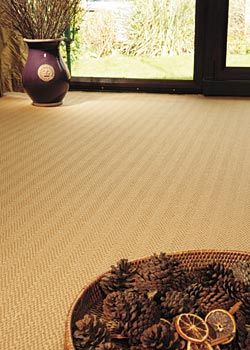home > contract carpets > 10 tips for a good carpet
Top 10 Tips for a Good Carpet
Antron® carpet fibre lends their expert advice on the important considerations when specifying carpet for commercial interiors
As with any floorcovering, the specification of a contract carpet that is fit-for-purpose involves a consideration of both aesthetics and performance.
Flooring is the most used, and certainly the most abused, surface area within commercial premises, but as the largest space any degradation in appearance through lack of maintenance or poor specification will be highly noticeable.
Facilities managers are involved in making many decisions when specifying contract carpet each vital for short, medium and long term performance and here are 10 top tips to ensure that the correct decision is attained:
1. Why Choose Carpet?
Carpets offer many benefits within commercial interiors including sound absorption, underfoot comfort, thermal insulation and improved slip resistance. The amount of colours, textures and patterns also gives specifiers plenty of scope within the design arena. All these contribute to improving the experience of building users producing quieter and more comfortable premises – central to the ethos of successful building management.
2. It all Starts with Pile Fibre
Types of fibre are generally nylon, wool and polypropylene. Nylon is the most versatile carpet fibre and responds well in a variety of locations. Suitable for use within in a range of budgets, nylon also leads the way in design flexibility. For high traffic commercial installations Nylon 6.6 provides a base level of stain resistance superior to other fibres, absorbing less thanks to a tighter molecular structure. When solution dyed the stain resistance is improved further. Fibre shape or cross section will affect soil retention and release. Soil hiding is determined by the way light is refracted within the fibre, while retention depends on the smoothness of the outer surface. In addition, with flammability a major consideration for specifiers of commercial interiors, specifiers should be aware that most carpets made with Nylon 6.6 fibre are more fire resistant than those made with polypropylene fibre.
3. Feel the Quality
Carpet fibre selection is critical since it determines the core of the carpet’s look and performance attributes. Regardless of manufacturing and backing technology, the fibre is still the most important factor in determining aesthetics, long-term performance and ease of maintenance.
4. How Long Will it Last?
Many things impact on the length of service a carpet can provide. Backing, construction, quality, fibre type and a regular maintenance programme all play important roles in supporting the service of a carpet.
5. Sustainability Considerations
Vital in determining the overall life cycle costing of the product, sustainability is as important to carpet manufacturers as it is to facilities managers. The key is to specify a floor that will remain on the floor for a long period (check out www.antron.eu for an on-line Total Lifecycle Cost calculator facility) then without the need for replacement, fewer raw materials and less energy is consumed. INVISTA, manufacturers of Antron® carpet fibre, were and still are the first carpet fibre manufacturers to be awarded an Environmental Profile by BRE Certification.
Environmental Profiles from BRE Certification are an internationally recognised third party certification awarded for products that demonstrate exceptional levels of environmental consideration in their sector.
6. Maintenance for Looks
To ensure maximum performance from the specified carpet, a maintenance programme must be issued and adhered to. A three-step process, maintenance starts with preventative measures such as keeping entrances clean and using walk off zones with suitable barrier and secondary matting. The next step is routine maintenance that essentially means regular vacuuming – particularly in high traffic areas. Finally periodic deep carpet cleaning should be carried out by professionals to remove embedded dirt. Furthermore, the choice of fibre can also help maintain a carpet’s good looks. Antron® Excel fibre unique multi-hollow core cross section refracts and reflects light and therefore does not showing dirt as much as other more conventional fibres.
7. Broadloom or Tile?
Carpet comes in a choice of either broadloom or tile and the nature of the installation will determine which is best suited to the specification. Broadloom carpets excel in hospitality environments where a large floor expanse demands seamless underfoot comfort. Usually in 50 x 50 cm format, carpet tiles offer excellent flexibility making them ideal for office spaces. Convenient to replace, modern carpet tiles offer a myriad of designs and textures and are the perfect companion to access flooring.
8. Colour and Design Principles
Colour and design options are heavily influenced by trends, but the choice should be put down to the nature of the installation. The colour, pattern and texture of the carpet can help to minimise the appearance of soiling. Solid colour cut pile carpet gives an elegant appearance but hides soil less well, where as patterns are the best at disguising dirt.
9. Structure and Texture
Each structure and texture offers different benefits and there is a wide choice on offer. Popular in hotels and other leisure locations such as pubs, woven axminsters combine design flexibility with heavy contract quality. Tufted options tend to be found in offices and similar commercial locations. With a less expensive production process, but equally hardwearing as woven offerings when in-situ, tufted carpets come in both loop and twist pile options offering specifiers creative freedom.
10. End-of-Life Recycling
Many manufacturers are now offering recycling or reconditioning schemes to ensure that carpet minimises its impact on the environment. Those utilising nylon 6.6 in carpet can have the fibre recycled into automotive components at the end of the floor’s usable life.

